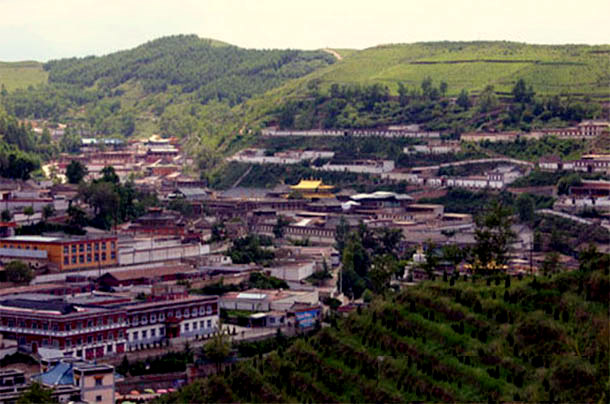 Dharamshala: - US based NGO, the International Campaign for Tibet (ICT) has denounced authorities' indifference and attempts to cover up serious water pollution in the area of Kumbum monastery and a nearby village in Rushar County in Amdo (Ch: Qinghai), eastern Tibet.
Dharamshala: - US based NGO, the International Campaign for Tibet (ICT) has denounced authorities' indifference and attempts to cover up serious water pollution in the area of Kumbum monastery and a nearby village in Rushar County in Amdo (Ch: Qinghai), eastern Tibet.
Many area residents have fallen ill from lead poisoning due to the waste from the Ganhetan Industrial District, a mining and smelting center in northeast Tibet.
According to the ICT, even the Chinese state news agency Xinhua denounced the pollution in March 2006. Xinhua's report named four lead smelting enterprises in the Ganhetan Industrial District as responsible for the pollution: the Western Mining Co Ltd, Branch Co Ka'erduo Smelting Works, Western Regions Lead Smelting Ganhe Smelting Works, and the Western Regions Lead Industries Ganhetan Crude Lead Factory . The report also stated that new enterprises were being built.
Since this time, ICT says, corrupt Chinese authorities have manipulated results on tests on the water. They have also driven nearly 30,000 farmers from land in the area for the purposes of industry.
ICT says an anonymous blogger reported that a petition had been circulated and presented to the authorities in late June. The petition stated that the "uncontrolled mining has caused a disastrous situation for the residents."
The petition states that the situation became more serious this past May and June when several monks and local residents who drank the water suffered symptoms such as nausea, powerlessness and daze. Some even had to be hospitalized.
When ingested, lead is toxic to the heart, bones, intestines, kidneys, reproductive, and nervous systems. Lead poisoning can cause anemia, abdominal pain, headache, irritability, and more seriously, seizures, coma, blood disease, cancer of digestive system, and death. It can also impair children's brain development, leading to permanent learning and behavioral disorders.
The blogger cited results of tests saying that 1,000 children have been exposed to the pollution and that over 100 have fallen ill as a result.
Villagers have peacefully protested the mining in the past; however, one peaceful protest ended in death for one Tibetan in 2010 when police opened fire on the demonstrators.
A similar situation occurred in May 2010, when a group of Tibetans, concerned about pollution from a cement factory in Amdo, began rebuilding a road that had been closed due to expansion of the factory. Fifteen people were wounded after police opened fire on the group.
In June, the New York Times said that thousands of villagers, children, and workers have been exposed to toxic levels of lead in the past two and a half years, mainly from battery factories and metal smelters.
The New York Times said these cases "underscore a pattern of government neglect seen in industry after industry as China strives for headlong growth with only embryonic safeguards."
According to the ICT, Chinese authorities began mining Tibet in the 1950s. China, facing growing shortages in supplies of raw materials, has increasingly exploited Tibet's minerals at a huge environmental cost to Tibet.
AsiaNews states that "Beijing claims to have greatly improved the economy and the standard of living in Tibet. In reality it exploits the rich deposits of the area without worrying about pollution, but taking away the raw material for the benefit of the rich southern provinces."


![Tibet has a rich history as a sovereign nation until the 1950s when it was invaded by China. [Photo: File]](/images/stories/Pics-2024/March/Tibet-Nation-1940s.jpg#joomlaImage://local-images/stories/Pics-2024/March/Tibet-Nation-1940s.jpg?width=1489&height=878)















